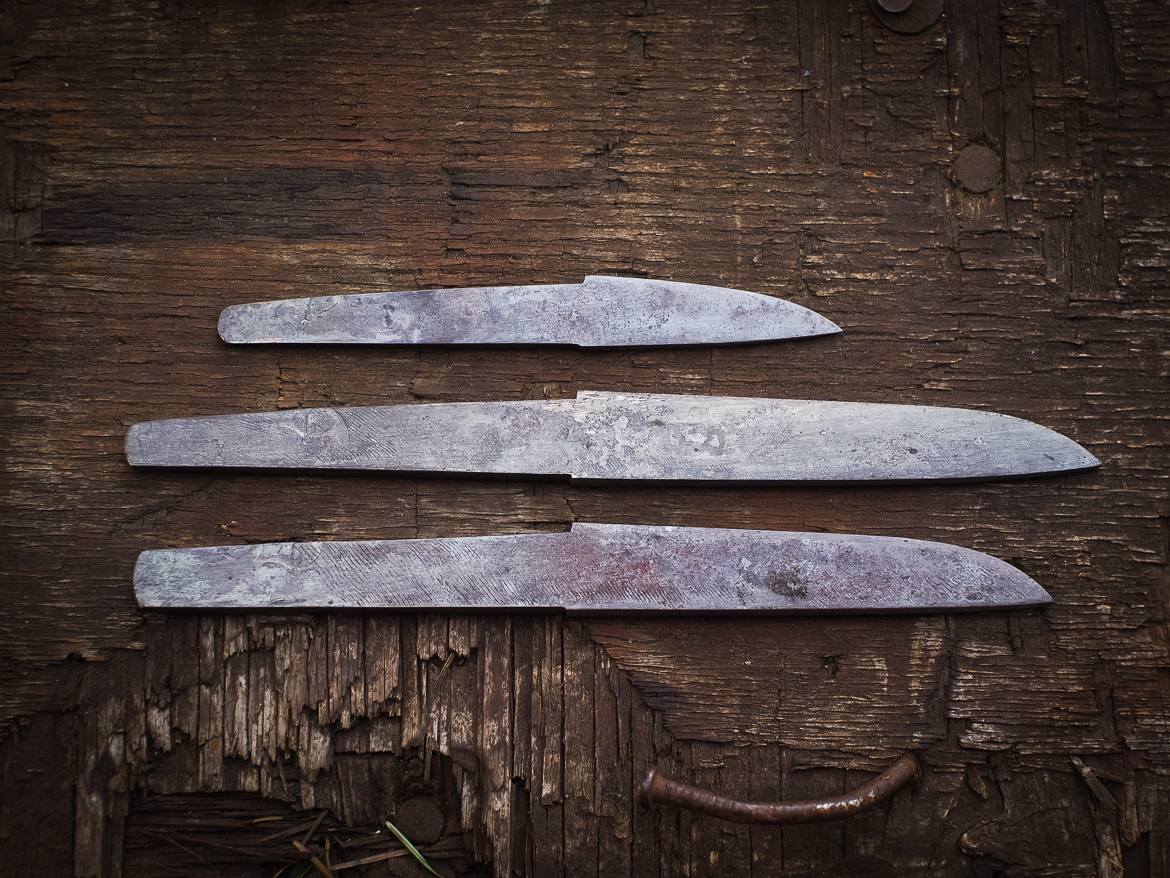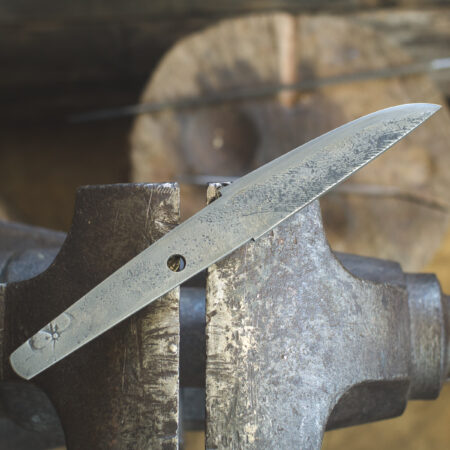Description
This blade is the size and style of the Forest Kotanto, has a kaji togi (stone) finish, and may be custom finished as part of the Tools for Satoyama project.
The temper of this high carbon steel blade has been left very hard in order to hold a keen edge for tasks such as wood carving and fine work. This particular combination of steel and heat treatment is well suited to users who require a good edge and are willing to take care of it. It would serve well as a carving, whittling, bushcraft, or utility knife.
The clay tempered blade was hand forged in a charcoal fire and still bears some of the hammer marks, fire scale, file marks, and original file teeth on the surface. It has been given its final hira-zukuri geometry, a working finish polish, and is sharpened but still has some ha-niku (“meat” behind the edge) left to work with in customizing the edge geometry to suit the end use, or even to create a fully polished finish. The inspection polish revealed a suguha hamon with two mountain peaks on the omote, a well-proportioned ko-maru boshi and turnback, an unusual vertical mizukage, and a possibility of some utsuri. The blade profile is based strongly on the tip portion of the Aizu Shintogo, one of the classiest tanto of all time.
The tang is constructed in a similar manner to a Japanese tanto requiring only a single bamboo peg to hold the knife assembly together. In addition to the sense of beautiful simplicity, this design allows the knife to be taken apart for cleaning, polishing, detailed cutting tasks, or major resharpening work.
The double tapered tang is designed to be mounted in the takedown style of nihonto, with a single removable bamboo peg, but has not been drilled yet and can be shaped or drilled to meet the final configuration. The blade is just over 4.5″ long and the overall length to the tip of the tang is just under 8.5″. The spine at the munemachi is about 5.5mm thick.
Specifications
Nagasa (blade length): 118mm, uchizori
Motokasane (blade thickness): 5.5mm, iori mune
Motohaba (blade width): 21mm, hira-zukuri
Nakago (tang): 98mm, kurijiri
Mei (signature): hot stamped kamon
Materials: reclaimed file steel



Process









